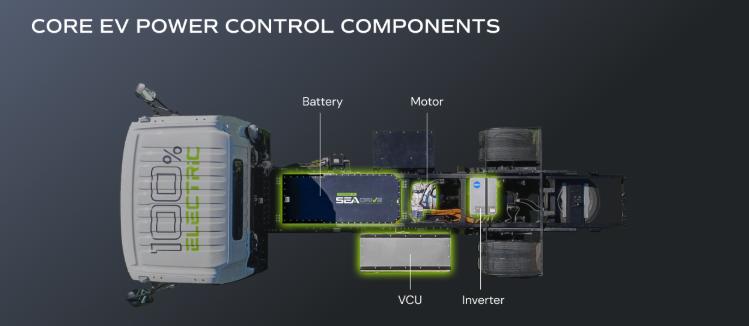À mesure que les véhicules électriques (VE) se généralisent, la complexité de leurs composants internes ne cesse de croître. L' unité de contrôle de charge du véhicule (VCCU) est un système crucial, mais souvent négligé. Ce composant constitue le cerveau du système de charge du véhicule, gérant l'alimentation en énergie de la batterie du VE de manière sûre et efficace.
Comprendre le VCCU : son rôle
L' unité de contrôle de charge du véhicule (VCCU) est un module électronique embarqué chargé de surveiller et de contrôler le processus de charge d'un véhicule électrique. Placée entre le chargeur embarqué du véhicule et le système de gestion de la batterie (BMS), la VCCU sert d'intermédiaire entre la borne de charge externe et les composants internes de la batterie.
Fonctions clés du VCCU :
-
Contrôle du flux de puissance : il régule le courant et la tension de charge provenant du chargeur EV, garantissant qu'ils s'alignent sur les limites de sécurité de la batterie.
-
Gestion de la communication : Le VCCU communique à la fois avec le BMS et la station de charge externe (via des protocoles tels que ISO 15118 ou DIN 70121), permettant une coordination pour un comportement de charge optimal.
-
Sécurité et protection : Il surveille la température, la tension et le courant pour éviter les surcharges, les surchauffes ou autres dysfonctionnements.
-
Commutation du mode de charge : il permet de basculer entre les modes de charge CA et CC en fonction de ce que le chargeur prend en charge.
-
Calcul de l'état de charge : il aide à calculer l'état de charge de la batterie en temps réel pour informer les conducteurs de l'autonomie estimée et du temps de charge restant.
Schéma de fonctionnement du VCCU

Pourquoi le VCCU est essentiel à la sécurité et à l'efficacité des véhicules électriques
Le processus de recharge moderne des véhicules électriques ne se résume pas à un simple branchement. Il implique un échange de données sécurisé, un contrôle précis de l'énergie et une surveillance en temps réel, le tout orchestré par le VCCU. Sans ce composant, les risques tels que la dégradation de la batterie, l'emballement thermique ou un transfert d'énergie inefficace augmenteraient considérablement.
Avantages d'un VCCU efficace :
-
Optimisation de la santé de la batterie : prolonge la durée de vie de la batterie en gérant des profils de charge idéaux.
-
Réponse de charge plus rapide : améliore l'adaptabilité de la vitesse de charge en fonction de la puissance disponible.
-
Gestion des coûts énergétiques : prend en charge la charge intelligente lorsqu'elle est intégrée au réseau et aux tarifs énergétiques.
Intégration avec la recharge intelligente et la technologie future des véhicules électriques
À mesure que l'industrie des véhicules électriques progresse vers l'intégration intelligente au réseau et la recharge rapide en courant continu haute puissance, le rôle des VCCU continuera de croître. Les futures versions des VCCU devraient prendre en charge :
-
Algorithmes de facturation pilotés par l'IA
-
Diagnostics basés sur le cloud
-
Mises à jour du micrologiciel à distance
-
Authentification Plug & Charge transparente
Essentiellement, le VCCU n’est pas seulement une unité de contrôle : c’est une passerelle essentielle vers un fonctionnement intelligent, sûr et efficace des véhicules électriques à l’ère de l’électrification.
Conclusion
L'unité de contrôle de charge du véhicule (VCCU) joue un rôle essentiel dans les véhicules électriques modernes en garantissant une charge sûre, optimisée et intelligente. Avec le perfectionnement des technologies de batteries et des réseaux électriques, l'importance de la VCCU ne fera que croître, la plaçant au cœur de la mobilité future.
Auteur : Lay Wen
Lectures recommandées : Comprendre l’ICCU dans les véhicules électriques : ce que c’est et pourquoi c’est important








Partager:
Qu'est-ce qu'un chargeur embarqué (OBC) dans un véhicule électrique ? Comprendre comment votre voiture se recharge
Combien coûte le remplacement d’une batterie Tesla en 2025 ?